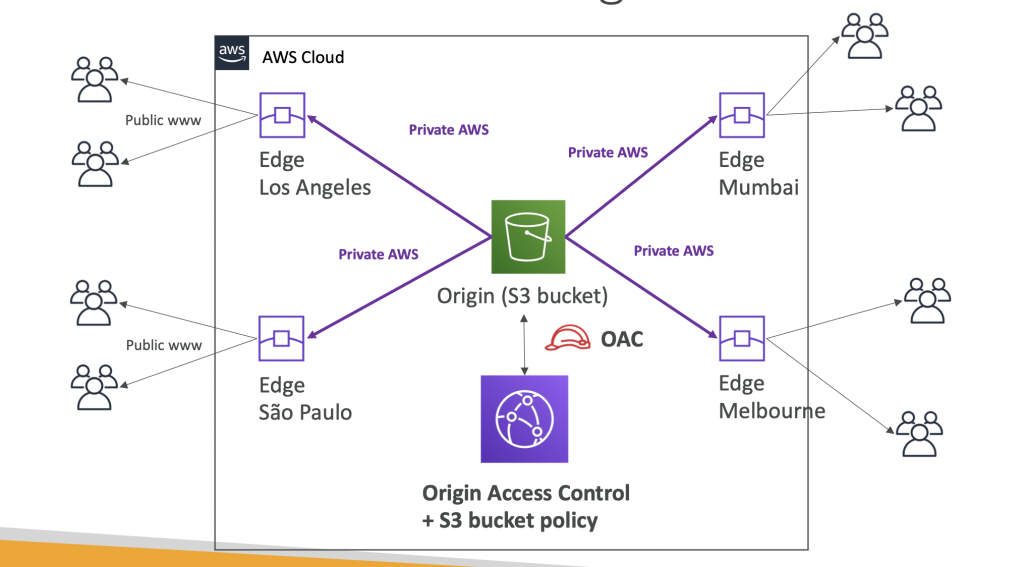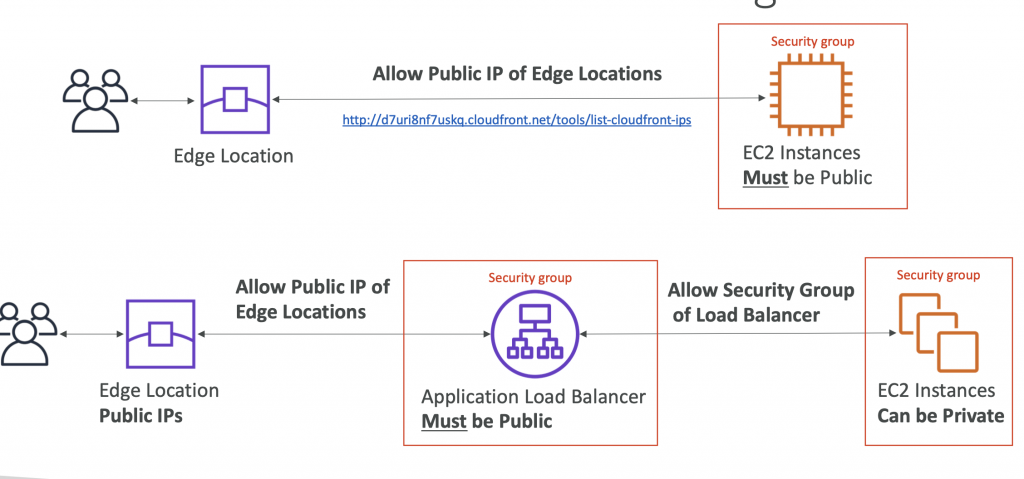This blog is a part of my journey “Embarking on the AWS Solution Architect Associate SAA-CO3 Certification Journey”
Table of Content
- Amazon CloudFront
- Amazon CloudFront Log – Origins
- S3 bucket
- Custom Origin (HTTP)
- ALB or EC2 as an origin
- CloudFront vs S3 Cross Region Replication
- CloudFront Geo Restriction
- CloudFront – Pricing
- Cache Invalidations
- AWS Global Accelerator
- AWS Global Accelerator vs CloudFront
Amazon CloudFront
- CloudFront is Content Delivery Network (CDN)
- Improves read performance, content is cached at the edge
- Improves users experience
- 216 Point of Presence globally (edge locations)
- DDoS protection (because worldwide), integration with Shield, AWS Web Application Firewall
CloudFront – Origins
S3 bucket
- For distributing files and caching them at the edge
- Enhanced security with CloudFront Origin Access Control (OAC)
- OAC is replacing Origin Access Identity(OAI)
- CloudFront can be used as an ingress (to upload files to S3)
Custom Origin (HTTP)
- Application Load Balancer
- EC2 instance
- S3 website (must first enable the bucket as a static S3 website)
- Any HTTP backend you want
CloudFront – S3 as an Origin

CloudFront – ALB or EC2 as an origin

CloudFront vs S3 Cross Region Replication
- CloudFront
- Global Edge network
- Files are cached for a TTL (maybe a day)
- Great for static content that must be available everywhere
- S3 Cross Region Replication
- Must be setup for each region you want replication to happen
- Files are updated in near real-time
- Read only
- Great for dynamic content that needs to be available at low-latency in few regions
CloudFront Geo Restriction
- You can restrict who can access your distribution
- Allowlist: Allow your users to access your content only if they’re in one of the countries on a list of approved countries.
- Blocklist: Prevent your users from accessing your content if they’re in one of the countries on a list of banned countries.
- The “country” is determined using a 3rd party Geo-IP database
- Use case: Copyright Laws to control access to content
CloudFront – Pricing
- CloudFront Edge locations are all around the world
- The cost of data out per edge location varies
- You can reduce the number of edge locations for cost reduction
- Three price classes
- Price Class All: all regions – best performance
- Price Class 200: most regions, but excludes the most expensive regions
- Price Class 100: only the least expensive regions
CloudFront – Cache Invalidations
- In case you update the back-end origin, CloudFront doesn’t know about it and will only get the refreshed content after the TTL has expired
- However, you can force an entire or partial cache refresh (thus bypassing the TTL) by performing a CloudFront Invalidation.
- You can invalidate all files (*) or a special path (/images/*)
AWS Global Accelerator
- Leverage the AWS internal network to route to your application.
- 2 Anycast IP are created for your application
- Anycast IP Definition: all servers hold the same IP address and the client is routed to the nearest one
- The Anycast IP send traffic directly to Edge Locations
- The Edge locations send the traffic to your application
- Works with Elastic IP, EC2 instances, ALB, NLB, public or private
- Consistent Performance
- Intelligent routing to lowest latency and fast regional failover
- No issue with client cache (because the IP doesn’t change)
- Internal AWS network
- Health Checks
- Global Accelerator performs a health check of your applications
- Helps make your application global (failover less than 1 minute for unhealthy)
- Great for disaster recovery (thanks to the health checks)
- Security
- only 2 external IP need to be whitelisted
- DDoS protection thanks to AWS Shield
AWS Global Accelerator vs CloudFront
- They both use the AWS global network and its edge locations around the world
- Both services integrate with AWS Shield for DDoS protection.
- CloudFront
- Improves performance for both cacheable content (such as images and videos)
- Dynamic content (such as API acceleration and dynamic site delivery)
- Content is served at the edge
- Global Accelerator
- Improves performance for a wide range of applications over TCP or UDP
- Proxying packets at the edge to applications running in one or more AWS Regions
- Good fit for non-HTTP use cases, such as gaming(UDP), IoT(MQTT),or Voice over IP
- Good for HTTP use cases that require static IP addresses
- Good for HTTP use cases that required deterministic, fast regional failover